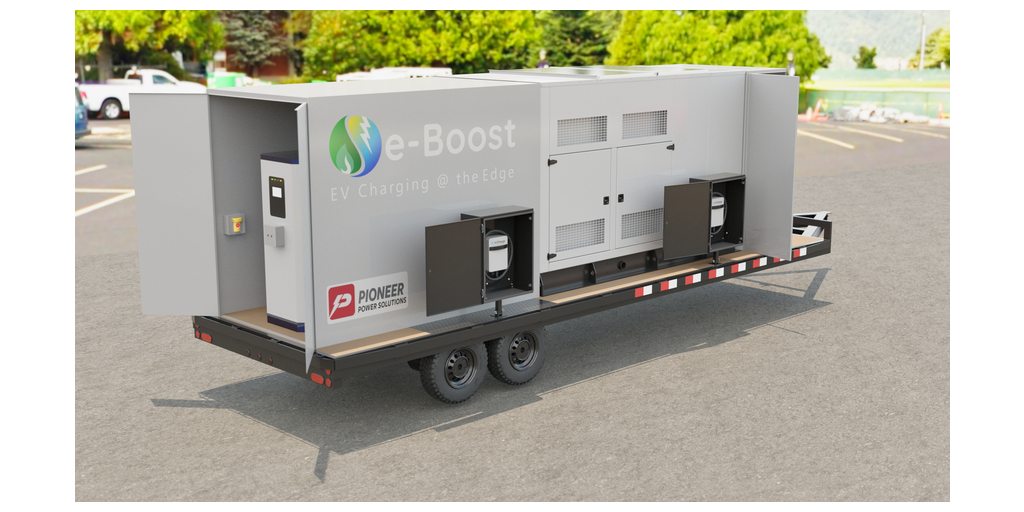
How do you encourage vested interests to move away from fossil fuels and into future-facing mining activities? That is, away from coal mining and into mining the resources to make batteries. The Queensland Labour government is trying to strike the right balance. The Labour Party receives the majority of support from the union movement. One of the most powerful unions is involved in the mining industry and is concerned about the loss of any jobs in that sector.
The mining companies also need to be kept on side. When the government increased royalties on coal, the mining industry unleashed an advertising campaign alleging that: investment would be lost, causing the loss of jobs. They are spinning the government royalty increase as an attack on the entire mining industry. The Queensland Resources Council (fronted by Ian McFarlane, a former Liberal minister in the federal government) is spending AU$40 million to ask the government to reconsider. But it’s just about coal. Miners need to move away from fossil fuels.
Thankfully, the public is not buying it. Instead, the mood has changed, the public sees the need for climate action and they also see the benefits of government spending on essential services. The government is now countering with an ad campaign designed to show the public what the extra money will be spent on — hospitals, schools, and infrastructure. It is shaping up to be a battle for the hearts, minds, and votes of the electorate. The state election is 16 months away.
A recent headline sums up the irony: “Queensland’s coal bonanza to fund green power shift.”
The royalty windfall (expected to be over AU$15.3 billion) will be used by Queensland Treasurer Cameron Dick to cut household power bills and inject $19 billion into state-owned clean energy projects, despite concerns that the spending may increase inflation, another issue the government has to address. The state government has achieved a AU$12 billion budget surplus — the largest of any Australian state in the history of the country!
A decade and a half ago, the Australian federal government tried to introduce a super profits tax on the booming mining industry but was defeated by public opinion. Not this time. Queensland has certainly pulled a rabbit out of the hat. And the rabbit has a carrot, the Premier of Queensland has announced what amounts to subsidies for miners exploring for and exploiting the critical minerals needed for the transition as they move away from fossil fuels.
Brisbane, the capital of Queensland, recently hosted the 26th World Mining Congress sponsored by CSIRO and the state and federal governments. Over 3,500 attendees participated. See introductory video here. After the conference, Resources Minister Scott Stewart will lead a delegation of more than 20 international investors and resources leaders on a tour of Mt Isa, Cloncurry and Townsville. It is expected that they will see the potential of Queensland’s possible multi-billion-dollar critical minerals sector.
The Queensland Critical Mineral Strategy was unveiled at the World Mining Congress in Brisbane. The new strategy positions Queensland as a global leader in delivering the critical minerals the world needs to move to a net-zero emissions future.
The Strategy will:
- Reduce rent for new and existing exploration permits for minerals to $0 for the next five years, worth $55 million.
- Establishing critical mineral zones, initially at Julia Creek/Richmond and around Mount Isa, with $75 million to support investment and renewed focus in advancing critical minerals projects.
- Establish Critical Minerals Queensland, a one-stop office to oversee the development of the sector and help drive and attract international investment.
- Invest $5 million to target mining waste and tailings for critical minerals, and $8 million towards scientific research including circular economy initiatives.
- Provide $1 million to foster research and ESG excellence.
- Deliver the $100 million Critical Minerals and Battery Technology Fund to support new investments in projects.
Mineral deposits in North Queensland are estimated to be worth more than AU$500 billion. To access and process these minerals, the government is investing AU$5 billion to build the Copperstring 2 network which will connect the North West Minerals Province with the largest renewable energy zone on the east coast of Australia to mine and process critical minerals with renewable energy.
“I want Queensland to be a global leader, supplier, and manufacturer of critical minerals and this strategy will help us achieve that,” Queensland Premier Annastacia Palaszczuk said. “The Strategy is in addition to the $68 million Queensland Resources Industry Development Plan and $75 million Queensland Resources Common User Facility (QRCUF) that will be built in Townsville. QRCUF is the first of its kind for Australia and will accelerate the development of critical mineral commercial mining projects, promote investment in advanced mineral manufacturing opportunities, and support supply chain and supporting industry development.”
Resources Minister Scott Stewart said: “From Mt Isa to Cloncurry, to Townsville, delegates will get a chance to see the best Queensland’s geology and geography have to offer. Queensland has vast reserves of critical minerals, such as copper, zinc, vanadium and cobalt, that the world is demanding to produce batteries and renewable energy as part of their plans to decarbonise.
“The Queensland Critical Mineral Strategy we launched this week is about not just mining the raw materials but also being able to process and manufacture the minerals the world needs right here in Queensland. The Queensland Critical Minerals Strategy is about acting now to position Queensland as a global leader in this new industrial revolution. This is a once-in-a-generation opportunity to show the world that Queensland truly is the land of resource opportunity.”
Visiting from the University of Utah, Professor Rajive Ganguli said regarding mining in Mt Isa — “it’s in the mining textbooks, so it’s exciting for me to actually be there and to see it.
“From a mining investment perspective Australia is always a great location, but with Queensland specifically, you have the right mix of deposits, people and knowledge to address things as they come up and lead the world.
“Because of the partnership between the state, universities and industry, a lot of chess pieces are in place here, so I expect Queensland to contribute quite a bit.”
Queensland, once the butt of jokes in Australia, is proving to be a leader in the transition from fossil fuels to the mining of minerals critical to a transition to our net zero emissions future. Queensland has long refused to adopt daylight saving, thus during summer, Brisbane is out of sync with the southern capitals of Sydney and Melbourne (where most national businesses have their corporate headquarters). This spawned the joke, “You are now entering Queensland, put your watch back one hour and your mind back 25 years.” This is no longer the case as Queensland miners are encouraged to move away from fossil fuels.
Featured image provided by Volvo Trucks.
I don’t like paywalls. You don’t like paywalls. Who likes paywalls? Here at CleanTechnica, we implemented a limited paywall for a while, but it always felt wrong — and it was always tough to decide what we should put behind there. In theory, your most exclusive and best content goes behind a paywall. But then fewer people read it! We just don’t like paywalls, and so we’ve decided to ditch ours. Unfortunately, the media business is still a tough, cut-throat business with tiny margins. It’s a never-ending Olympic challenge to stay above water or even perhaps — gasp — grow. So …



